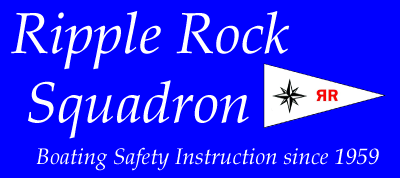Introduction to Collision Regulations - There is a risk of collision, what do we do now? (more advanced situations with vessels in sight of each other)
Caution:
- The following information has been simplified so we can give you a basic introduction using (mostly) non-technical language. Review the actual Regulations for in-depth information (we have noted the rule number, in square brackets, where practical). The Regulations can be found on our links page.
- A lot of effort has been made to ensure the information is correct, but errors may occur (If you find one please leave a message for our Webmaster).
- This information is intended for boaters on the BC Coast; it does not address modifications for vessels operating in the Great Lakes Basin.
The following is based on vessels being within sight of each other. See Action on risk of collision in restricted visibilty otherwise.
Once it has been determined there is a risk of collision, determining Give Way and Stand on becomes more complex when different types (or vessels with different types of constraints) determine there is a risk of collision. This can be made even more complex when the area is considered a narrow channel, or currents are encountered, or if it happens in a Traffic Separation scheme.
First, Responsibilities between vessels [Rule 18]
-
Seaplanes keep out of way of *;
-
Power driven vessels, which keep out of way of;
-
Sailing vessel (and vessel under oars [kayak, canoe, paddleboard]), which keep out of way of;
-
Fishing vessels, which keep out of way of
-
Vessels constrained by their draught, which keep out of the way of;
-
Restricted in Manoeuvrability (buoy tending, conducting underwater operations, etc.) or Not under Command (propulsion or steering not working, etc.)
* If a seaplane is unable to to stay well clear, will then be considered to be the same as a power driven vessel.
Therefore, if a vessel under sail meets a power driven vessel, the power driven vessel is the give way vessel, and the sailboat is the stand on vessel.
Note that if the vessel under sail is also using its engine for propulsion, it is now considered the same as a power driven vessel. (and it must display a cone apex down, forward where it can best be seen [Rule 25 e]. In Canadian waters of a roadstead, harbour, river, lake or inland waterway, a vessel of less than 12 meters in length is not required to display the cone [Rule 25 f])
Note that vessels that are towing are not an entry on this list. Under the rules they are considered to be simply another power driven vessel, unless they are severely restricted, in which case they would display signals for restricted in manoeuvrability, and be treated as such [Rule 27 c].
Three factors that can override some of the above.
Narrow channels [Rule 9]
- Power driven vessels of less than 20 metres in length, sailing vessels or fishing vessels must stay out of the way of vessel that can only navigate in the channel
- Stay to starboard side of channel
- Vessel running with current has right of way over vessel running against current.
Traffic Separation Schemes [Rule 10]
- Traffic Separation Schemes are shown on your chart as dashed magenta lines forming pathways along major shipping routes. There are small ones near Kelsey Bay and Alert Bay, which simply serve to route northbound traffic on the north side of the local island, and the southbound traffic to the south. The main ones you will deal with are around Vancouver, running towards the Gulf Islands through Haro Strait.
- Vessels should avoid crossing traffic lanes, but if it must, shall cross as near as possible at right angles to the flow of traffic.
- Vessels less than 20m shall not impede the the safe passage of a power driven vessel following a traffic lane
- More details can be found in the Collision Regulations
Overtaking [Rule 13]
- An example of this is a sailboat overtaking a power driven vessel. The sailboat must stay clear of the powerboat until past and clear
Return to Basic Introduction to the Collision Regulations
